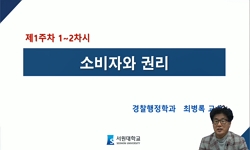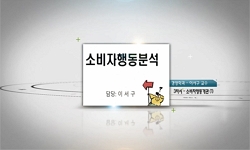Empirical studies provide evidence that many consumers prefer a flat-rate, even though their billing rate would be lower on a pay-per-use tariff. When it comes to tariff choices, some consumers thus seem to be subject to a cognitive error, a so-called...
http://chineseinput.net/에서 pinyin(병음)방식으로 중국어를 변환할 수 있습니다.
변환된 중국어를 복사하여 사용하시면 됩니다.
- 中文 을 입력하시려면 zhongwen을 입력하시고 space를누르시면됩니다.
- 北京 을 입력하시려면 beijing을 입력하시고 space를 누르시면 됩니다.
MAKING USE OF TARIFF-CHOICE BIASES – INVESTIGATING STRATEGIES TO ENHANCE INTENSITY OF FLAT-RATE BIASES
한글로보기https://www.riss.kr/link?id=A109014404
- 저자
- 발행기관
- 학술지명
- 권호사항
-
발행연도
2014
-
작성언어
English
- 주제어
-
KDC
325
-
등재정보
01
-
자료형태
학술저널
-
수록면
1871-1871(1쪽)
- 제공처
-
0
상세조회 -
0
다운로드
부가정보
다국어 초록 (Multilingual Abstract)
Empirical studies provide evidence that many consumers prefer a flat-rate, even though their billing rate would be lower on a pay-per-use tariff. When it comes to tariff choices, some consumers thus seem to be subject to a cognitive error, a so-called “flat-rate bias”. Based on survey data, we analyse causes and strategies to enhance the occurrence and intensity of flat-rate biases within 2 studies. The results of study 1 (n=104) point out to five important drivers of flat-rate biases, namely the taximeter, insurance, overestimation, convenience and smart-shopping effect. Within study 2 (n=416), we subsequently evaluate the effectiveness of advertisements using the identified causes for a flat-rate bias as setting levers to increase consumers' tariff-specific willingness-to-pay. Our findings show that the most effective way to enhance the return on flat-rate bias would be to enhance communication of the fact that consumers can protect themselves from fluctuations in the billing amount through a flat rate (insurance effect) and that consumers must not worry about costs when using a flat rate (taximeter effect).
동일학술지(권/호) 다른 논문
-
MARKETING DECISION MAKING BEHAVIOR UNDER THE INFLUENCE OF ATTRACTIVE PERFORMANCE-LINKED REWARDS
- 글로벌지식마케팅경영학회
- Abhishek Pathak
- 2014
- 01
-
SUPPLIER-RETAILER POWER ASYMMETRY
- 글로벌지식마케팅경영학회
- Catherine Sutton-Brady
- 2014
- 01
-
A BRAND ATTITUDE COMPARISON BETWEEN EAST ASIANS AND WESTERNERS
- 글로벌지식마케팅경영학회
- Yoko Sugitani
- 2014
- 01
-
- 글로벌지식마케팅경영학회
- Karinna Nobbs
- 2014
- 01




 코리아스칼라
코리아스칼라






